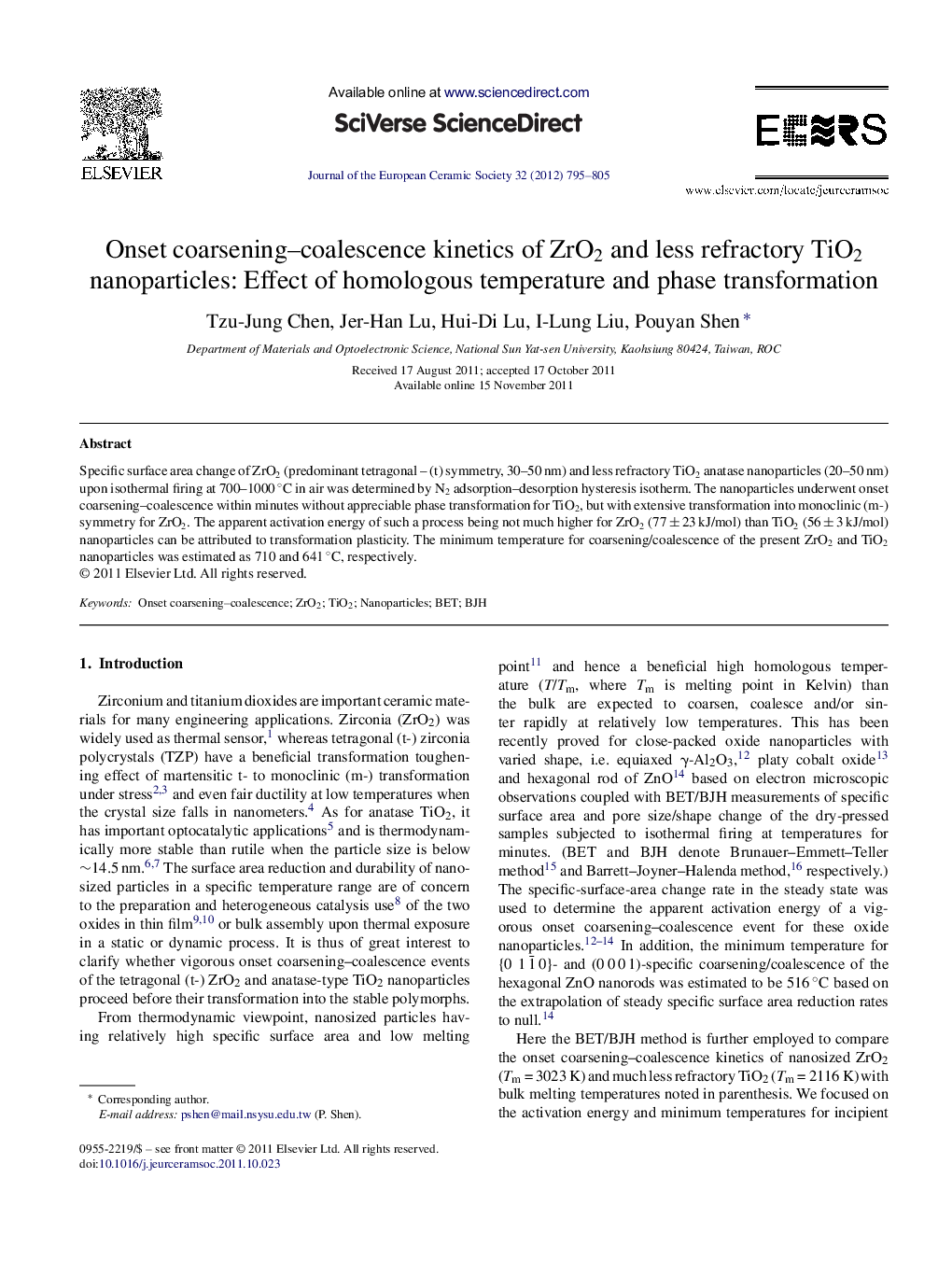| کد مقاله | کد نشریه | سال انتشار | مقاله انگلیسی | نسخه تمام متن |
|---|---|---|---|---|
| 1476077 | 991141 | 2012 | 11 صفحه PDF | دانلود رایگان |

Specific surface area change of ZrO2 (predominant tetragonal – (t) symmetry, 30–50 nm) and less refractory TiO2 anatase nanoparticles (20–50 nm) upon isothermal firing at 700–1000 °C in air was determined by N2 adsorption–desorption hysteresis isotherm. The nanoparticles underwent onset coarsening–coalescence within minutes without appreciable phase transformation for TiO2, but with extensive transformation into monoclinic (m-) symmetry for ZrO2. The apparent activation energy of such a process being not much higher for ZrO2 (77 ± 23 kJ/mol) than TiO2 (56 ± 3 kJ/mol) nanoparticles can be attributed to transformation plasticity. The minimum temperature for coarsening/coalescence of the present ZrO2 and TiO2 nanoparticles was estimated as 710 and 641 °C, respectively.
Journal: Journal of the European Ceramic Society - Volume 32, Issue 4, April 2012, Pages 795–805